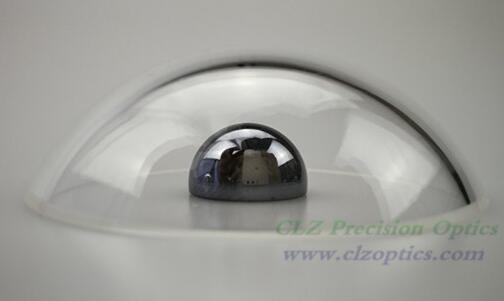The Advantages of Fused Silica & Quartz
Dec. 07, 2021
Every optical designer's tool belt comes with a wide variety of materials to choose from. However, from high and low refractive index optical glasses, absorption filters, various crystals, composites and plastics, few have the broad appeal of fused silica. In terms of applications, this high-purity, non-crystalline material is often the preferred substrate, and for good reason. If you are in the market for a versatile, high-performance substrate for lenses, windows, mirrors, or even simple, stable tools, consider the following.

Low coefficient of thermal expansion
A hallmark of fused silica is its thermal stability. While other optical materials lose their surface accuracy with large changes in temperature, fused silica is known for its ability to resist thermal shock and expansion. This important property makes it a perfect choice for mirror substrates when considering the application of metallic or dielectric coatings. The low CTE also helps maintain the accuracy of optical transmission wavefront distortion over a range of temperatures.
Transmission Range
Through a variety of manufacturing processes, fused silica manufacturers have made it possible to achieve surprisingly high throughputs over a wide spectral range. Standard grade UV fused silica transmits >90% over the 200 nm to 2 µm range with only slight deviations at 1.4 µm wavelengths. Switch to IR grade fused silica and remove the OH absorption band and you will achieve >90% in the 250 nm to 3.5 µm range. There are other fused silica varieties with low metallic impurities that allow transmission in the extreme UV region of high power semiconductors, 248nm and 193nm. Since most optical glasses "turn on" at 350nm and begin to "decay" near the 2 micron range, fused silica is simply a superior and more versatile optical material.
High chemical resistance
Fused silica is chemically inert and will not react with a wide range of compounds, including most very high concentrations of acids, except hydrofluoric acid. This durability is very useful when fused silica is used as a window in harsh environments or as a laboratory tool in contact with corrosive chemicals. This resistance also protects the integrity of the surface finish of the optics, contributing to flatness and transmission wavefront distortion.
Minimal/no fluorescence
Signal-to-noise ratio is an important factor in the design of every optical system. When exposed to high intensity radiation such as UV, many materials absorb energy and re-emit it, thus emitting fluorescence. This effect introduces unwanted noise into the system, which degrades the overall signal and reduces the efficiency of the instrument. Fused silica provides very low and in many cases no fluorescence in the presence of such radiation. This particular property has earned fused silica a reputation as the material of choice for laser applications.


















